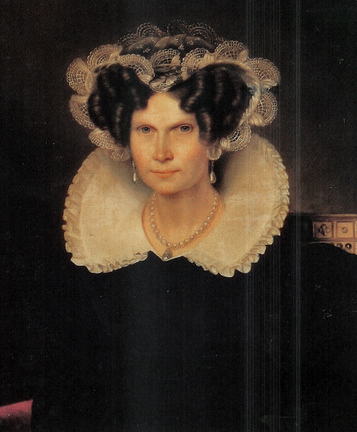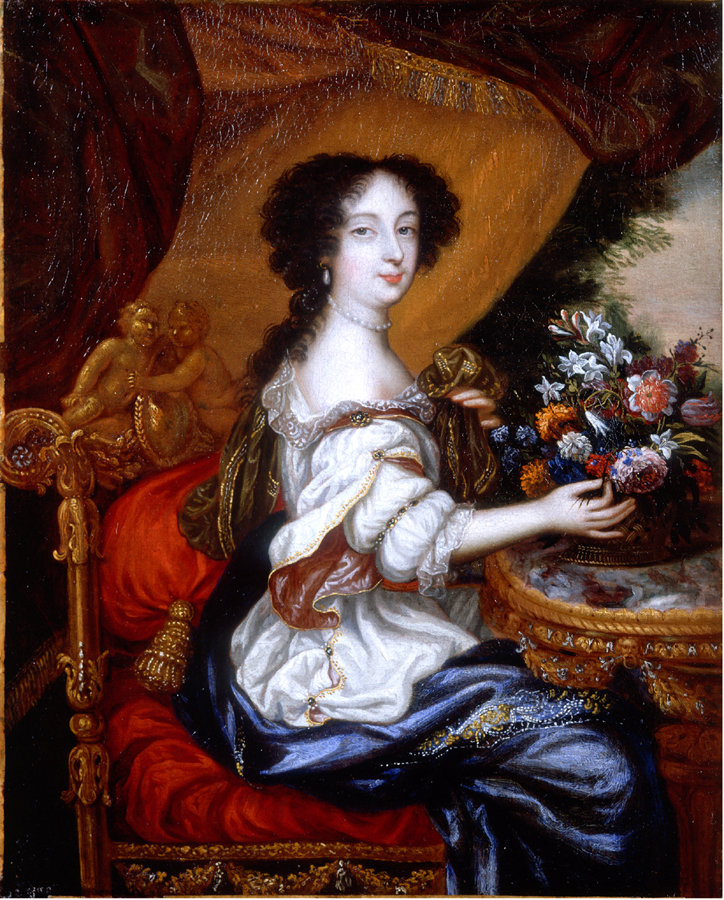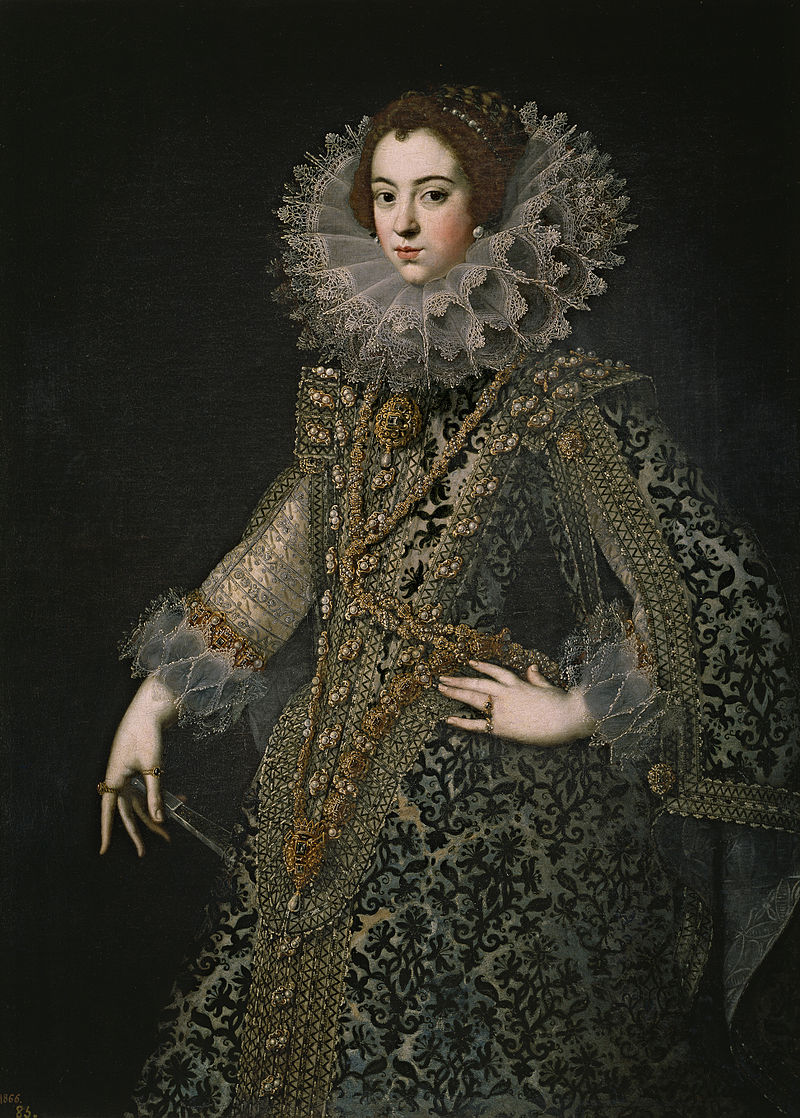© Unofficial Royalty 2024

Wilhelmine of Prussia, Queen of the Netherlands; Credit – Wikipedia
Today’s Royal Events
- National Day of Spain (October 12)
October 12, 1537 – Birth of King Edward VI of England at Hampton Court Palace in Richmond upon Thames, England
Twenty-six years into his reign, King Henry VIII of England was still without a male heir. He married his third wife Jane Seymour eleven days after Anne Boleyn’s execution, and Jane was pregnant before her first wedding anniversary, which would prove to be her only wedding anniversary. As was tradition, Jane went into confinement a month before the baby’s due date. At 2 AM, on October 12, 1537, the long-awaited male heir was born. Jane’s labor had been long, two days and three nights. Three days later, the baby was christened Edward after Edward the Confessor whose feast day is October 13. His half-sisters 21-year-old Mary and four-year-old Elizabeth attended the ceremony along with his mother who was carried on a litter. Henry’s joy soon turned into grief. On October 17, 1537, Jane’s condition deteriorated and she was given the last rites. She died on October 24, 1537, most likely from puerperal fever or childbed fever, a bacterial infection. Edward succeeded his father at age nine but died from tuberculosis six years later.
Unofficial Royalty: King Edward VI of England
October 12, 1576 – Death of Maximilian II, Holy Roman Emperor, King of Bohemia, King of Hungary and Croatia, Archduke of Austria in the Imperial City of Regensburg, now in the German state of Bavaria; buried in St. Vitus Cathedral in Prague, Kingdom of Bohemia, now in the Czech Republic
Maximilian married his first cousin Infanta Maria of Spain, the daughter of his uncle Holy Roman Emperor Charles V, who was also King Carlos I of Spain and Isabella of Portugal. The couple had fifteen children including two Holy Roman Emperors and two Queen Consorts (France and Spain). Upon the death of his father Ferdinand I, Holy Roman Emperor, who was also King of Hungary, Croatia, and Bohemia and Archduke of Austria, Maximilian succeeded as ruler of the Habsburg hereditary lands and was elected Holy Roman Emperor. During his reign, Maximilian had to deal with the ongoing Ottoman-Habsburg wars, conflicts with his Spanish Habsburg cousins, and the effects of the 1555 Peace of Augsburg. The Peace of Augsburg officially ended the religious struggle between Lutherans and Catholics, and made the legal division of Christianity permanent within the Holy Roman Empire, allowing the rulers of the constituent monarchies of the Holy Roman Empire to choose either Lutheranism or Roman Catholicism as the official religion of their state.
Unofficial Royalty: Maximilian II, Holy Roman Emperor, King of Bohemia, King of Hungary and Croatia, Archduke of Austria
October 12, 1730 – Death of King Frederik IV of Denmark and Norway; at Odense Palace in Denmark; buried at Roskilde Cathedral in Denmark
Frederik is known for the two bigamous marriages he made with his mistresses. Despite this, he was a fairly successful ruler. He selected his advisors carefully and held audiences in which ordinary people could speak to him and present letters with complaints or requests. Frederik was not very familiar with the Danish language, which he only used on state occasions. He usually spoke and wrote in German and French. Frederik IV was interested in Italian architecture and traveled to Italy several times and he had two palaces built in the Italian Baroque style. Frederiksberg Palace, located in Frederiksberg, close to Copenhagen, was built 1699 – 1735. Fredensborg Palace built 1720 – 1726, is located on Lake Esrum in Fredensborg on the island of Zealand in Denmark. Toward the end of his life, Frederik IV suffered from edema, then called dropsy. He died the day after his 59th birthday.
Unofficial Royalty: King Frederik IV of Denmark and Norway
October 12, 1798 – Birth of King Pedro IV of Portugal/Emperor Pedro I of Brazil at Queluz Palace in Lisbon, Portugal
Full name: Pedro de Alcântara Francisco António João Carlos Xavier de Paula Miguel Rafael Joaquim José Gonzaga Pascoal Cipriano Serafim
As Emperor Pedro I, he was the founder and first ruler of the Empire of Brazil. As King Pedro IV, he reigned briefly over Portugal. On April 7, 1831, after a political crisis that ended with the resignation of his ministers and in the middle of an economic crisis, Pedro abdicated the throne of Brazil in favor of his six-year-old son who reigned as Emperor Pedro II of Brazil. Pedro returned to Portugal where he died at the age of 35, from tuberculosis at his birthplace.
Unofficial Royalty: Pedro I, Emperor of Brazil/Pedro IV, King of Portugal
October 12, 1810 – The origin of Oktoberfest was the wedding of King Ludwig I of Bavaria and Princess Therese of Saxe-Hildburghausen in Munich, Kingdom of Bavaria, now in Bavaria, Germany
In 1809, Therese was included on a list of prospective brides for Napoleon I, Emperor of the French who was looking to marry into one of the old royal houses of Europe. However, the future King Ludwig I of Bavaria would become her husband. The couple met in December 1809 when Ludwig visited Hildburghausen, and the couple became engaged on February 12, 1810. After prolonged negotiations, primarily due to Therese’s unwillingness to convert to Catholicism, she and her family traveled to Munich, Kingdom of Bavaria, now in the German state of Bavaria, for the marriage. Therese and Ludwig married on October 12, 1810, and celebrations were held for several days at the Theresienwiese in Munich, a large outdoor space named in her honor. The Bavarian royal family invited the citizens of Munich to attend the festivities. Theresienwiese is the site of Oktoberfest, held each year to commemorate the wedding.
Unofficial Royalty: King Ludwig I of Bavaria
Unofficial Royalty: Therese of Saxe-Hildburghausen, Queen of Bavaria
Unofficial Royalty: Oktoberfest’s Royal Connection
October 12, 1837 – Death of Wilhelmine of Prussia, Queen of the Netherlands, wife of King Willem I of the Netherlands, at Noordeinde Palace in The Hague, the Netherlands; buried at Nieuwe Kerk in Delft, the Netherlands
In 1791, Wilhelmine married her first cousin Prince Willem of Orange-Nassau, later King Willem I of the Netherlands, and the couple had four children. Wilhelmine was not successful in her role as Queen. While she still contributed generously to charities, her subjects thought her cold and distant as she only came in contact with family and her court ladies. In the now modern-day Belgium areas, Wilhelmine was ridiculed for her old-fashioned German style of dress. Wilhelmine’s health worsened in 1820 and by 1829, she rarely appeared in public. After a trip in the spring of 1837 to a grandson’s christening in Berlin, Wilhelmine was beyond exhaustion. She spent the summer at Het Loo Palace in Apeldoorn, Netherlands. On October 4, 1837, Wilhelmine and her husband traveled to Noordeinde Palace in The Hague. The trip greatly weakened Wilhelmine and her condition worsened. Queen Wilhelmine died eight days later, at the age of 63, with her family at her bedside.
Unofficial Royalty: Wilhelmine of Prussia, Queen of the Netherlands
October 12, 1876 – Birth of Grand Duke Kirill Vladimirovich of Russia at Tsarskoye Selo, near St. Petersburg, Russia
Kirill was the son of Grand Duke Vladimir Alexandrovich (son of Alexander II, Emperor of All Russia) and Duchess Marie of Mecklenburg-Schwerin. In 1905, he married his first cousin Victoria Melita of Edinburgh and Saxe-Coburg and Gotha, a granddaughter of Queen Victoria. Because Nicholas II, Emperor of All Russia did not consent to the marriage, Kirill was stripped of his military appointments and his funding. The couple was banished from Russia and settled in France. By 1908, Kirill was third in line to the Imperial throne, following several deaths within the family. Nicholas II relented and allowed Kirill to return to Russia, restoring his military positions and his funding. (See below. Kirill died on his 62nd birthday.)
Unofficial Royalty: Grand Duke Kirill Vladimirovich of Russia
October 12, 1894 – Birth of Elisabeth of Romania, Queen of Greece, wife of King George II of Greece, daughter of King Ferdinand I of Romania, at Peleş Castle in Sinaia, Romania
Full name: Elisabeta Charlotte Josephine Alexandra Victoria
Elisabeth was a great-granddaughter of Queen Victoria through her mother Princess Marie of Edinburgh. In 1921, she married the future King George II of Greece. George and Elisabeth had no children, and would eventually divorce in 1935. After her divorce, Elisabeth petitioned to have her Romanian citizenship restored which she had relinquished upon her marriage. Through wise investments and the booming Romanian economy, Elisabeth became financially well-off. She devoted much of her time to charity, working with many organizations to help children and those who were ill. At her own expense, she established a hospital and children’s home in Bucharest, Romania.
Unofficial Royalty: Elisabeth of Romania, Queen of Greece
October 12, 1938 – Death of Grand Duke Kirill Vladimirovich of Russia in Neuilly, France; first buried in the Ducal Mausoleum at the Glockenburg Cemetery in Coburg, Germany, in 1995 his remains were moved to the Grand Ducal Mausoleum at the Peter and Paul Fortress in St. Petersburg, Russia
Following the abdication of Nicholas II in 1917, Kirill and his family left Russia. They settled first in Finland, before moving on to Munich, Germany, and then Zurich, Switzerland. They settled permanently in Saint-Briac, France, in the mid-1920s. In addition, they had inherited property in Coburg from Victoria Melita’s mother. Bolstered by a group of supporters, and the laws of the former Imperial Family (under which Kirill was the rightful heir to the throne), on August 31, 1924, Kirill declared himself Emperor of All the Russias. His son Vladimir Kirillovich and then Vladimir’s daughter Maria Vladimirovna both took on the claim.
Unofficial Royalty: Grand Duke Kirill Vladimirovich of Russia
October 12, 2018 – Wedding of Princess Eugenie of York and Jack Brooksbank at St. George’s Chapel, Windsor Castle in Windsor, England
Eugenie and Jack were introduced by mutual friends in Verbier, Switzerland. Eugenie was on holiday and Jack was working there at the time. After seven years together, Jack proposed to Eugenie while on holiday in Nicaragua at the end of 2017.
Unofficial Royalty: Wedding of Princess Eugenie of York and Jack Brooksbank
This article is the intellectual property of Unofficial Royalty and is NOT TO BE COPIED, EDITED, OR POSTED IN ANY FORM ON ANOTHER WEBSITE under any circumstances. It is permissible to use a link that directs to Unofficial Royalty.






















